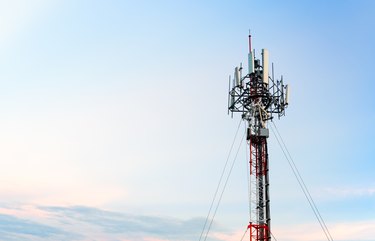
Radio stations and callers using their mobile phones transmit their messages over certain frequency bands, and these transmissions can get lost in a wave of other frequencies that are transmitted in the same space. People who are curious about how things are received properly despite the busy mix are experiencing the concepts of baseband and passband.
Baseband
Video of the Day
The baseband is defined as a transmission signal that contains more than just a single frequency from 0 Hz to the highest frequency component. In essence, the baseband is the original signal that is intended to be transmitted. However, this baseband frequency, when transmitted towards its target, can easily be slowed down or can pick up noise and distortion, which is why the original baseband signal must be transmitted into radio frequency. Radio frequency, however, also is at risk for transmission problems, creating the need for a band-pass filter.
Video of the Day
Band-pass Filter
A band-pass filter is simply a circuit that receives input – in this case, the baseband signal that has been converted into radio frequency – then filters out all other frequencies except for a specific frequency that the filter allows it to pass through. In this way, a band-pass filter effectively eliminates any sort of disturbance from the desired frequency that a recipient wants to receive. An example is an FM radio tuner. The tuner itself acts as a band-pass filter that allows, for example, only a 107.5 MHz signal to pass through in order for the user to hear music from the desired radio station. The filtered signal is termed a passband.
Passband
The passband is the output of a band-pass filter. It is a signal that corresponds to the settings of the band-pass filter. While baseband is the original signal, passband is the filtered signal. Passband is more technically defined as the portion of the spectrum between limiting frequencies with minimum relative loss or maximum relative gain. Given the earlier example, a radio tuner set at 107.5 MHz will allow only 107.5 MHz to pass through. Anything below or above 107.5 MHz will be blocked by the filter.
Returning Passband back to Baseband
After filtering, once the passband signal 107.5 MHz is received, the circuitry of the radio demodulates and demultiplexes it so that a radio listener receives, in some manner, the original or intended baseband signal. While baseband is the original signal, passband is the filtered signal that is eventually converted back to baseband. Some short-distance systems do not have to modulate baseband to higher frequencies before transmission. This is more common in lines that do not require any form of modulation such as Ethernet. Without the risk of interference or distortion, such systems do not need baseband to be modulated and filtered to passband before reverting to baseband.